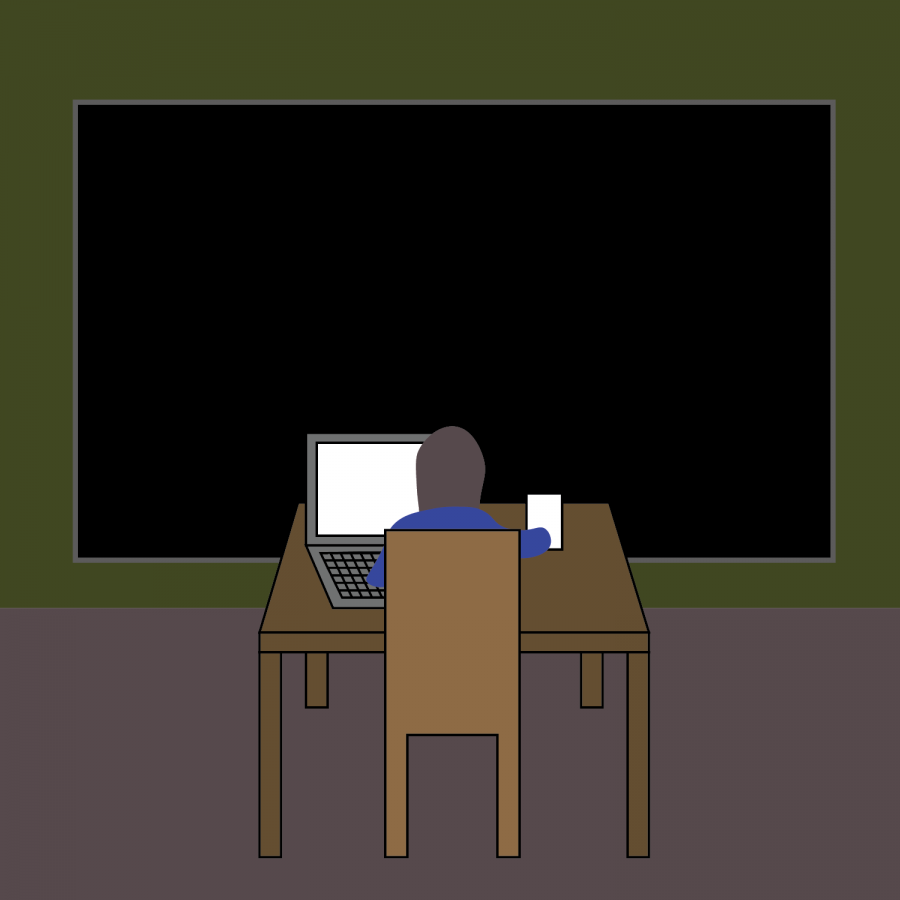Erase chalkboards from UI
Oct 15, 2018
Do you feel like it’s been abnormally difficult to keep your eyes open in class? Are you trying to enjoy an interesting lecture only to notice your eyes betraying you?
While it might be a lack of sleep or something else entirely, it could also very well be what you’re looking at.
No, I’m not talking about your professor. I’m talking about that dark space right behind them: the chalkboard.
Before coming to campus, I had not seen a chalkboard since elementary school. And it’s immediately obvious why.
There are two reasons why the University needs to modernize and embrace the 1990s trend that swept the nation: dry-erase boards (whiteboards).
Get The Daily Illini in your inbox!
First, chalkboards are dark. There is a reason why we read black text on white paper and why the same is true for your device’s screen. Not only does the contrast help you read faster, but the white background keeps you focused. It literally wakes you up (or at least prevents the drowsiness that’s bound to occur while staring at a chalkboard). I’m someone who’s a bit sensitive to the amount and type of lighting in a room, but no matter how much light there is, looking at a chalkboard is always drab.
Second, whiteboards are easier to read. Not only for the contrast just mentioned, but because markers can produce crisper lines in a variety of colors that can really pop. This alone is a great tool for professors who love to write on the board as they lecture and accentuates specific concepts. Cleanup is also much easier. Quality, modern whiteboards erase completely (not to mention no chalk dust mess). There’s no outline or residue left behind like there is with chalkboards, so students can concentrate on what the professor is writing, and stay awake as they do it.
Chalkboard proponents give many reasons for why they prefer them, but I find all these reasons to be equally applicable to whiteboards. Mathematicians and scientists may have the only reasonable objection to my position, but theirs is one of space, not quality.
Other objections either point to the shortcomings of cheap or antiquated whiteboards — glare, becoming dull, needing frequent replacement — but I have never noticed these aesthetic issues over my past nine years with whiteboards, and cost-prohibitive whiteboard maintenance has become a nonissue.
The real obstacles to the switchover are the same obstacles that arise whenever any change is presented: habit and nostalgia.
I sympathize with those professors and students who love to use chalkboards because it’s what they’ve always known. Chalkboards might even bring them back to the nostalgia of earlier days. But increasingly, chalkboards are not encountered by students until college and thus, unable to understand the nostalgia, they just assume the University is too cheap to replace them.
Writing with chalk also requires a certain skillset, and I understand it can be difficult to transition to a new process, especially if it feels uncomfortable because it’s unfamiliar.
But the board exists for the students, and I know their learning is what professors care about most. If whiteboards help students see and understand better, and even help them stay awake and focus, then there’s no reason to go another year with chalkboards.
Matt is a junior in Media.






